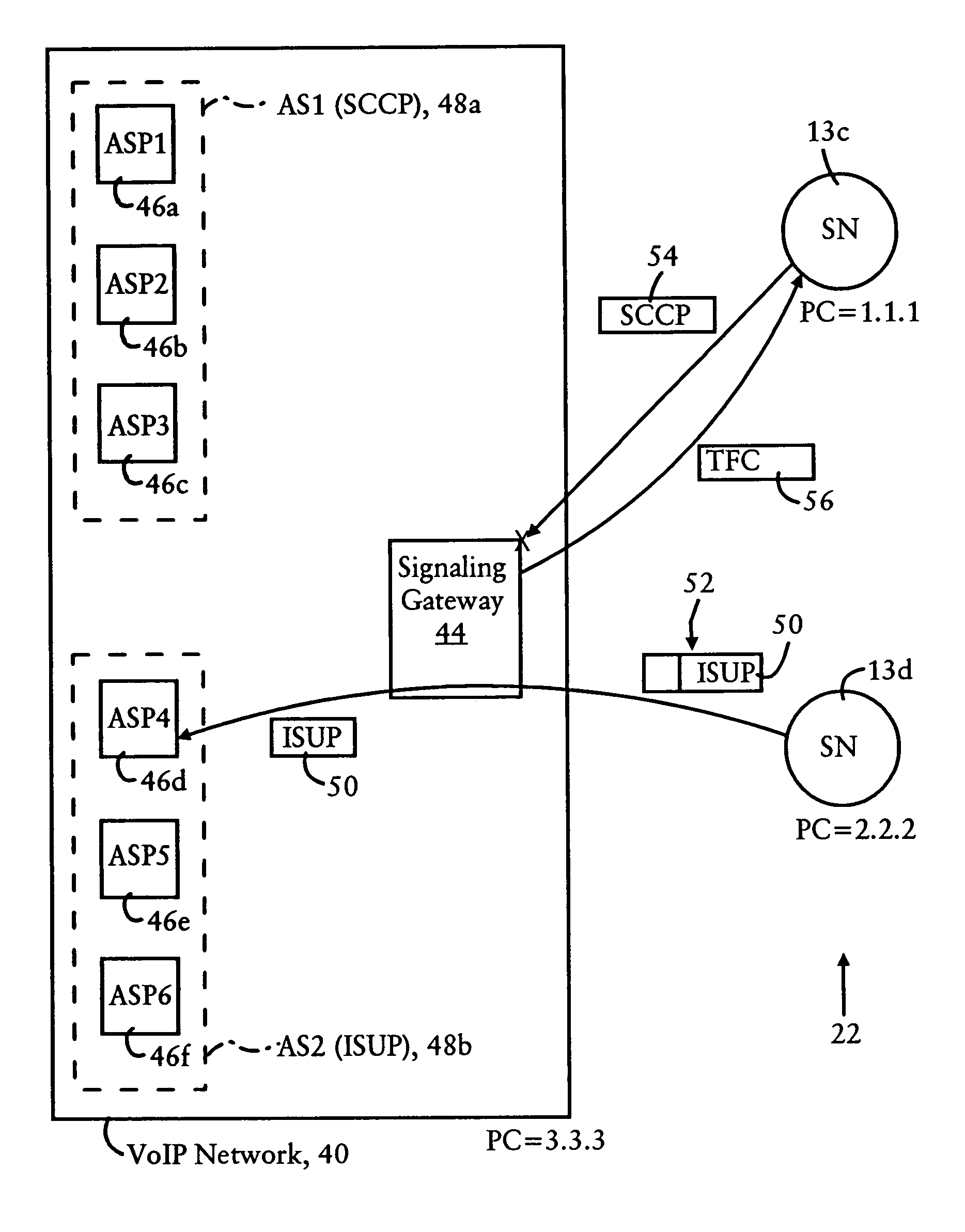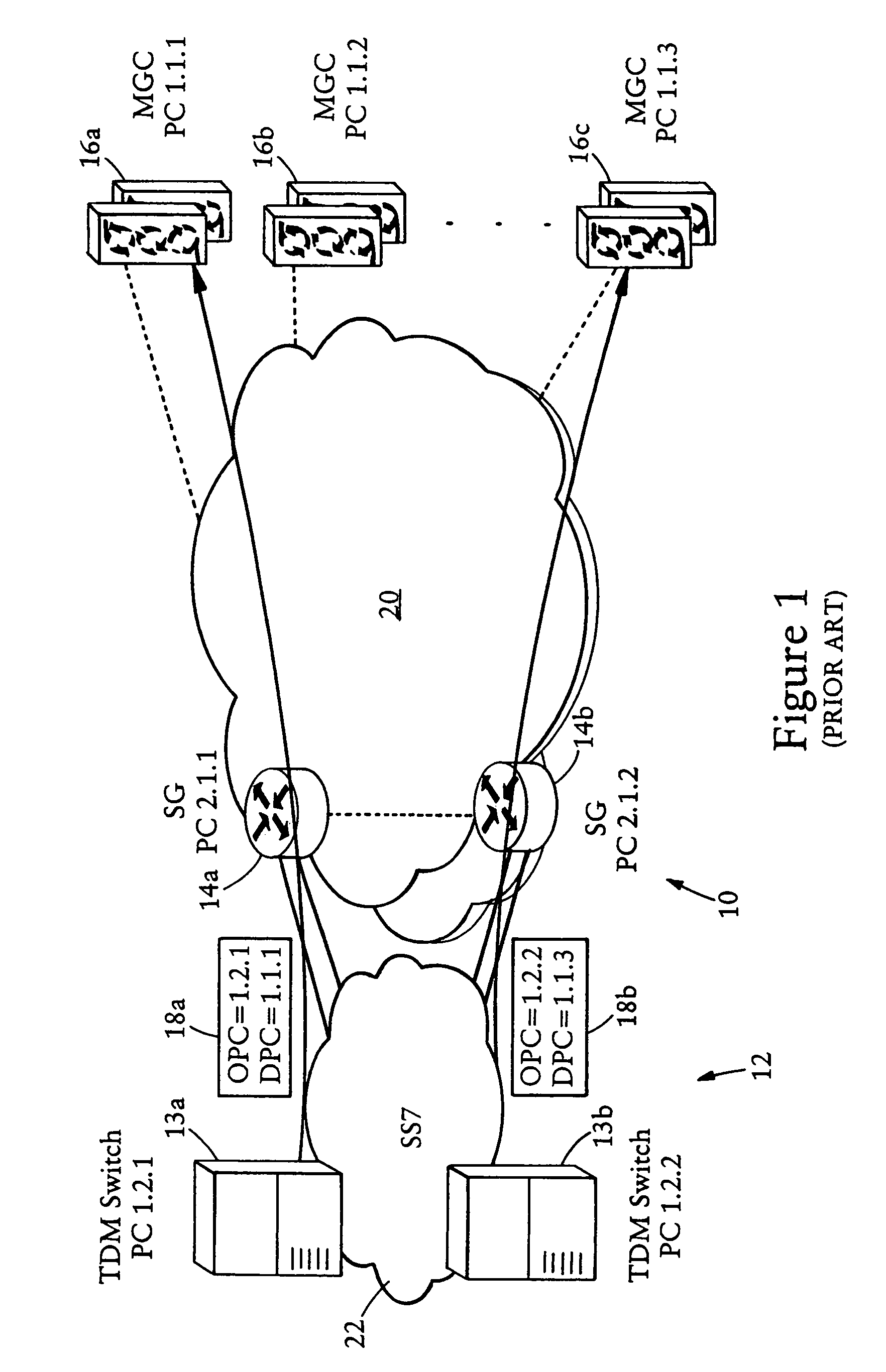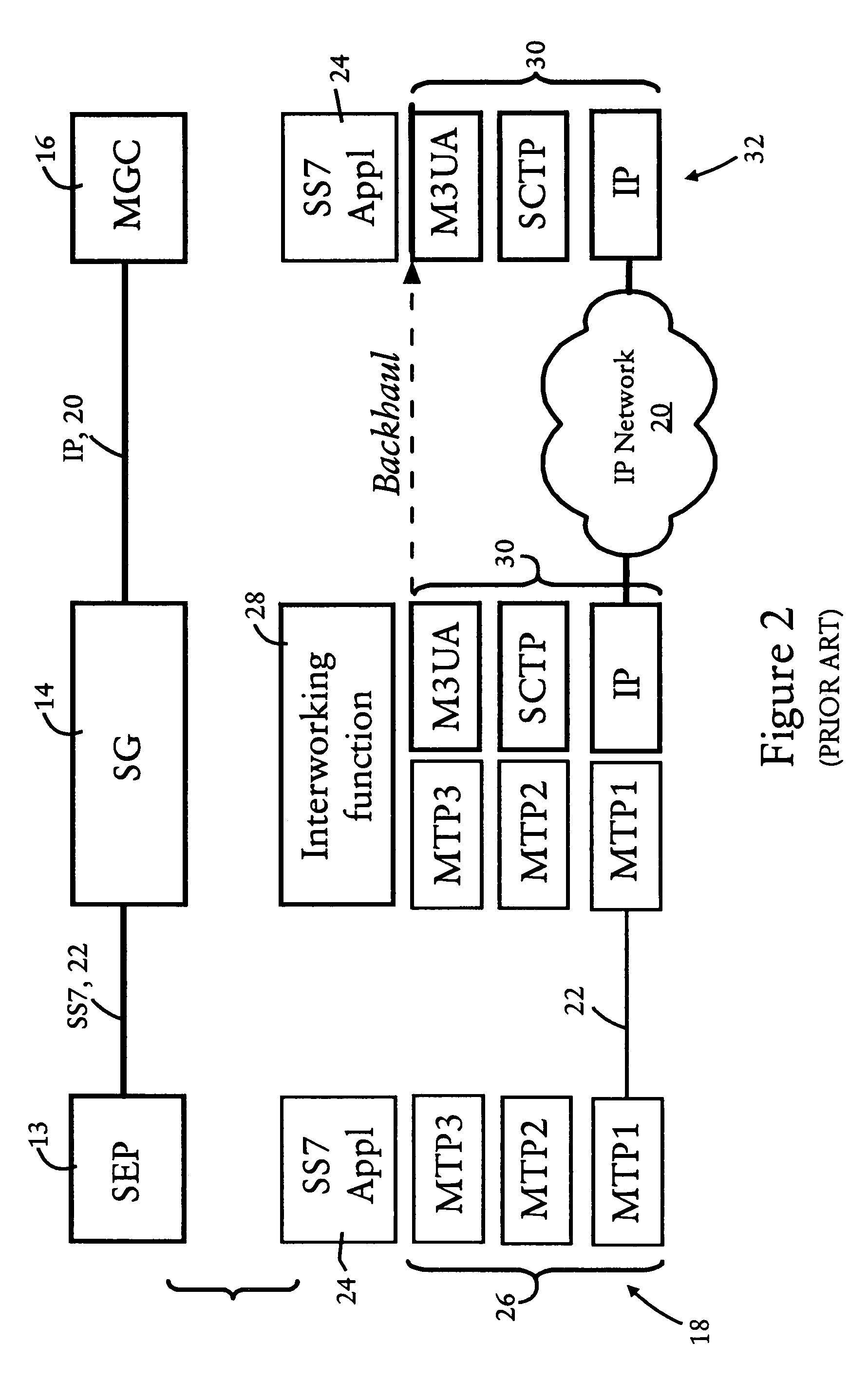Arrangement for controlling congestion for multiple host groups sharing a single signaling point code in an IP-based network using respective group congestion levels
a technology of ip-based networks and host groups, applied in data switching networks, frequency-division multiplexes, instruments, etc., can solve problems such as unnecessary traffic cessation for uncongested traffic, and achieve the effect of minimizing the interruption of msu traffi
- Summary
- Abstract
- Description
- Claims
- Application Information
AI Technical Summary
Benefits of technology
Problems solved by technology
Method used
Image
Examples
Embodiment Construction
[0032]FIG. 3 is a block diagram illustrating a Voice over IP network 40 configured for interfacing with an SS7 signaling network 22, according to an embodiment of the present invention. As illustrated in FIG. 3, the signaling network 22 includes SSP-capable PSTN switches 13c and 13d having respective point codes 1.1.1, and 2.2.2. Although not shown in FIG. 3, the SS7 signaling network 22 could include a mated pair of switching transfer points (STPs) for routing signaling traffic.
[0033]The Voice over IP network 40 includes signaling message transfer nodes, for example signaling gateways and call agents, sharing the same point code 3.3.3. For simplicity, a single signaling gateway 44 is illustrated, although typically the Voice over IP network 40 will include multiple signaling gateways 44 that communicated with mated STPs. The signaling gateway 44 is also referred to as an IP Transfer Point (ITP).
[0034]The Voice over IP network 40 also includes call agents (i.e., media gateway contro...
PUM
 Login to View More
Login to View More Abstract
Description
Claims
Application Information
 Login to View More
Login to View More - R&D
- Intellectual Property
- Life Sciences
- Materials
- Tech Scout
- Unparalleled Data Quality
- Higher Quality Content
- 60% Fewer Hallucinations
Browse by: Latest US Patents, China's latest patents, Technical Efficacy Thesaurus, Application Domain, Technology Topic, Popular Technical Reports.
© 2025 PatSnap. All rights reserved.Legal|Privacy policy|Modern Slavery Act Transparency Statement|Sitemap|About US| Contact US: help@patsnap.com



